Tired of scouring your kitchen cabinets in search of that elusive Bundt pan? Fear not, for in the world of baking, creativity knows no bounds!
Whether you’re whipping up a delectable pound cake or a towering, intricately designed dessert, the absence of a Bundt pan is no obstacle on your culinary journey.
From unconventional household items to innovative techniques, there’s a myriad of alternatives waiting to be discovered. So, bid farewell to the traditional pan and embark on a baking adventure where resourcefulness reigns supreme.
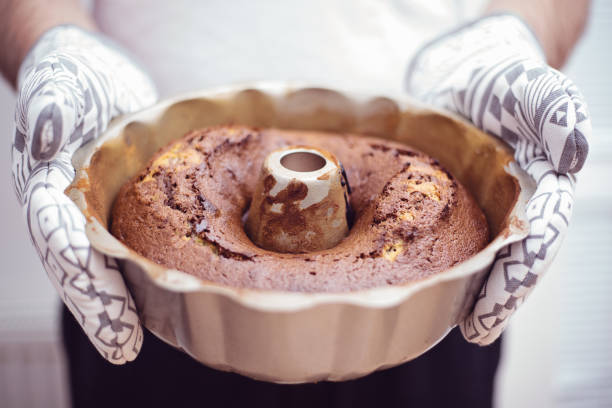
What Can You Use Instead Of A Bundt Pan
When baking a cake or any dish that typically requires a Bundt pan, you might find yourself in a situation where you don’t have one readily available.
However, fear not! There are several alternatives you can use, depending on the specific dish you’re preparing and the shape you want to achieve. Here are some options:
1. Tube Pan
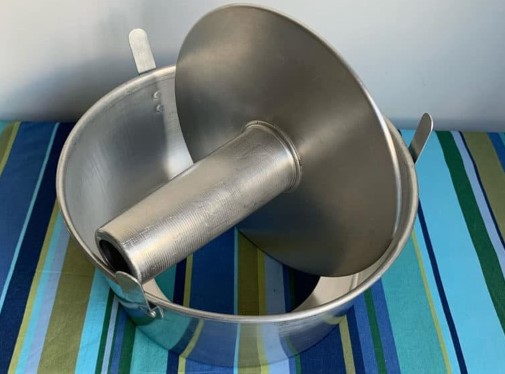
A tube pan is an excellent alternative to a Bundt pan when it comes to baking cakes with a hole in the center, such as angel food cake or pound cake. Here’s a detailed overview of using a tube pan:
Description
A tube pan, also known as an angel food cake pan or chiffon cake pan, is a round baking pan characterized by its tall, straight sides and a hollow tube or chimney in the center.
This tube allows heat to circulate evenly throughout the cake during baking, promoting uniform rising and baking. Tube pans typically come in various sizes, with the most common being 9 or 10 inches in diameter.
Advantages
- Even Baking: The hollow center of the tube pan facilitates even distribution of heat, ensuring that the cake bakes uniformly without any dense or undercooked spots.
- Structural Support: The tall, straight sides of the tube pan provide structural support, allowing tall cakes to rise properly without collapsing.
- Easy Release: Many tube pans have a removable bottom or sides, making it easier to remove the cake from the pan without damaging its delicate structure.
Usage
When using a tube pan as a substitute for a Bundt pan, follow these steps:
- Grease and flour the tube pan generously to prevent the cake from sticking to the sides.
- Prepare the cake batter according to your recipe.
- Pour the batter into the greased and floured tube pan, ensuring that it fills the pan evenly.
- Smooth the top of the batter with a spatula to create an even surface.
- Place the tube pan in the preheated oven and bake the cake according to the recipe’s instructions.
- Once the cake is baked, remove it from the oven and allow it to cool in the pan for a few minutes.
- To remove the cake from the tube pan, run a knife around the edges of the pan to loosen the cake. If the pan has a removable bottom, gently push it up from the bottom to release the cake. If not, carefully invert the pan and tap it on a flat surface to release the cake.
Tips
- Adjust Baking Time: Since tube pans and Bundt pans may have slightly different depths and materials, you may need to adjust the baking time accordingly. Keep an eye on the cake as it bakes and perform the toothpick test to check for doneness.
- Cooling: Allow the cake to cool completely on a wire rack before slicing and serving. This helps prevent the cake from collapsing and ensures that it maintains its shape.
2. Round Cake Pan

Using a round cake pan as an alternative to a Bundt pan requires some adjustments, as it won’t create the same ring-shaped cake with a hole in the center. However, it’s still a viable option for baking certain types of cakes. Here’s a detailed guide on using a round cake pan:
Description
A round cake pan is a baking dish typically made of metal, aluminum, or non-stick material, with straight sides and a flat bottom. These pans come in various sizes, such as 8-inch, 9-inch, or 10-inch in diameter, and are commonly used for baking layer cakes.
Advantages
- Versatility: Round cake pans are versatile and can be used for baking various types of cakes, including layer cakes, sponge cakes, and even some Bundt cake recipes with modifications.
- Easy to Find: Round cake pans are widely available and can be found in most kitchenware stores, making them a convenient option if you don’t have a Bundt pan on hand.
- Easy Storage: Unlike Bundt pans, which can be bulky and difficult to store, round cake pans are compact and stackable, requiring minimal storage space.
Usage
When using a round cake pan as a substitute for a Bundt pan, follow these steps:
- Grease and flour the round cake pan thoroughly to prevent the cake from sticking to the sides.
- Prepare the cake batter according to your recipe.
- Pour the batter into the greased and floured round cake pan, spreading it evenly with a spatula.
- Smooth the top of the batter to ensure an even surface.
- Place the round cake pan in the preheated oven and bake the cake according to the recipe’s instructions.
- Once the cake is baked, remove it from the oven and allow it to cool in the pan for a few minutes.
- To remove the cake from the round cake pan, run a knife around the edges of the pan to loosen the cake. Then, gently invert the pan onto a wire rack to release the cake.
Tips
- Adjust Baking Time and Temperature: Since round cake pans may have different depths and materials compared to Bundt pans, you may need to adjust the baking time and temperature accordingly. Keep an eye on the cake as it bakes and perform the toothpick test to check for doneness.
- Layer Cakes: If you’re baking a layer cake, you can stack multiple rounds of cake on top of each other with layers of frosting in between to create a similar effect to a Bundt cake.
3. Springform Pan

Using a springform pan as a substitute for a Bundt pan offers its own unique advantages and challenges. While it won’t produce the same decorative ring-shaped cake, it can still yield delicious results, especially for cakes that are dense or prone to sticking.
Here’s a detailed guide on using a springform pan:
Description
A springform pan is a round baking pan characterized by its removable bottom and expandable ring sides, secured by a latch or spring mechanism.
These pans are commonly used for making cheesecakes, tortes, and other desserts that require easy removal from the pan without disturbing the delicate structure.
Advantages
- Easy Release: The removable bottom and expandable ring sides of a springform pan make it easy to release the cake without damaging its shape or texture.
- Versatility: Springform pans can be used for a wide range of desserts, including cakes, cheesecakes, tarts, and quiches, making them a versatile option in the kitchen.
- Leakproof: Many springform pans feature a tight seal between the base and the ring, preventing leaks and ensuring a clean baking experience.
Usage
When using a springform pan as a substitute for a Bundt pan, follow these steps:
- Prepare the springform pan by greasing the bottom and sides with butter or cooking spray. You may also want to line the bottom of the pan with parchment paper to prevent sticking.
- Prepare the cake batter according to your recipe.
- Pour the batter into the prepared springform pan, spreading it evenly with a spatula.
- Tap the pan gently on the countertop to remove any air bubbles and ensure an even distribution of batter.
- Place the springform pan in the preheated oven and bake the cake according to the recipe’s instructions.
- Once the cake is baked, remove it from the oven and allow it to cool in the pan for a few minutes.
- Release the latch or spring mechanism on the side of the pan to loosen the ring.
- Carefully lift the ring away from the cake, leaving the base in place.
- Transfer the cake to a serving platter or cake stand using a spatula or offset knife.
Tips
- Adjust Baking Time: Since springform pans may have different depths and materials compared to Bundt pans, you may need to adjust the baking time accordingly. Keep an eye on the cake as it bakes and perform the toothpick test to check for doneness.
- Decorating: While a springform pan won’t create the same decorative ring-shaped cake as a Bundt pan, you can still decorate the top of the cake with frosting, glaze, powdered sugar, or fresh fruit to enhance its appearance.
4. Muffin Pan
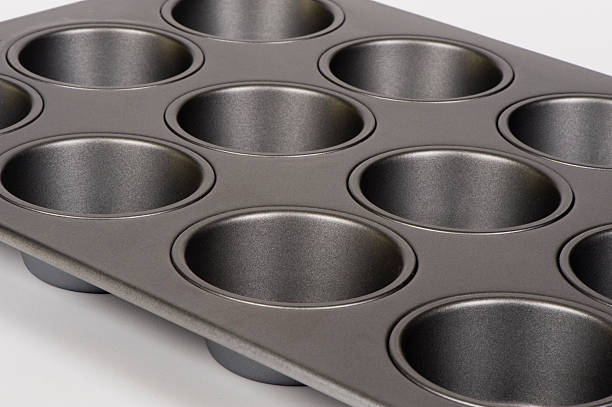
Using a muffin pan as a substitute for a Bundt pan is a creative approach that can result in individual-sized portions of your favorite Bundt cake recipe.
While the final product won’t have the same ring-shaped appearance, it offers a fun twist and can be ideal for serving at parties or gatherings. Here’s how to use a muffin pan as a substitute:
Description
A muffin pan, also known as a cupcake tin or muffin tin, is a baking pan with multiple individual cup-shaped compartments. These compartments are typically round and may feature fluted edges, perfect for creating muffins, cupcakes, and other baked goods.
Advantages
- Portion Control: Using a muffin pan allows you to portion the cake batter into individual servings, making it easier to serve and enjoy.
- Quick Baking: Muffins and cupcakes baked in a muffin pan typically have shorter baking times compared to larger cakes, allowing for quicker preparation and baking.
- Versatility: Muffin pans can be used for a variety of recipes beyond muffins and cupcakes, including mini cakes, brownie bites, and savory appetizers.
Usage
When using a muffin pan as a substitute for a Bundt pan, follow these steps:
- Preheat your oven to the temperature specified in your Bundt cake recipe.
- Grease each compartment of the muffin pan with butter, cooking spray, or paper liners to prevent sticking.
- Prepare your Bundt cake batter according to the recipe’s instructions.
- Spoon the batter evenly into each compartment of the muffin pan, filling them about two-thirds full. Avoid overfilling to prevent the batter from spilling over during baking.
- Place the muffin pan in the preheated oven and bake the mini Bundt cakes according to the recipe’s recommended baking time. Keep a close eye on them, as they may bake faster than a traditional Bundt cake due to their smaller size.
- Once the mini Bundt cakes are baked, remove the muffin pan from the oven and allow the cakes to cool in the pan for a few minutes.
- Carefully remove the cakes from the muffin pan and transfer them to a wire rack to cool completely before serving or decorating.
Tips
- Decoration: Mini Bundt cakes baked in a muffin pan can be decorated with frosting, glaze, powdered sugar, or fresh fruit to enhance their appearance and flavor.
- Variations: Experiment with different flavors and toppings to create a variety of mini Bundt cakes to suit your taste preferences or special occasions.
- Storage: Store any leftover mini Bundt cakes in an airtight container at room temperature for up to several days, or freeze them for longer-term storage.
5. 9-Inch Pie Pans
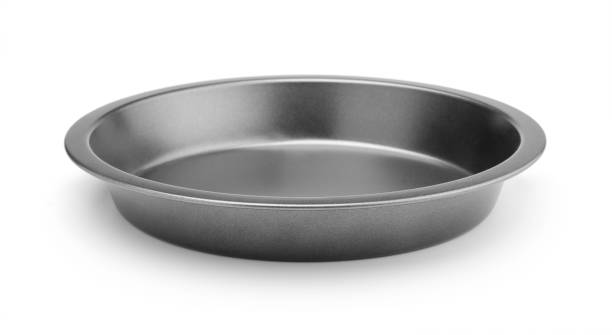
Using a 9-inch pie pan as a substitute for a Bundt pan offers a unique twist to your traditional Bundt cake recipe. While the resulting cake won’t have the iconic ring shape, it can still be delicious and visually appealing. Here’s how to use a 9-inch pie pan as a substitute:
Description
A 9-inch pie pan is a round baking dish with sloped sides and a flat bottom, typically made of metal, ceramic, or glass. It’s commonly used for baking pies, quiches, and other savory or sweet dishes.
Advantages
- Versatility: Pie pans are versatile and can be used for baking a variety of dishes, making them a useful tool in the kitchen.
- Easy Availability: Pie pans are widely available and can be found in most kitchenware stores, making them a convenient option if you don’t have a Bundt pan on hand.
- Uniform Baking: Pie pans provide even heat distribution, resulting in consistent baking and delicious results.
Usage
When using a 9-inch pie pan as a substitute for a Bundt pan, follow these steps:
- Preheat your oven to the temperature specified in your Bundt cake recipe.
- Grease the bottom and sides of the pie pan generously with butter, cooking spray, or oil to prevent sticking.
- Prepare your Bundt cake batter according to the recipe’s instructions.
- Pour the batter into the greased pie pan, spreading it evenly with a spatula.
- Tap the pie pan gently on the countertop to remove any air bubbles and ensure an even distribution of batter.
- Place the pie pan in the preheated oven and bake the cake according to the recipe’s recommended baking time. Keep a close eye on it, as it may bake faster than a traditional Bundt cake due to the shallower depth of the pie pan.
- Once the cake is baked, remove it from the oven and allow it to cool in the pan for a few minutes.
- Carefully invert the pie pan onto a wire rack to release the cake. If needed, run a knife around the edges of the cake to loosen it from the pan.
Tips
- Adjust Baking Time: Since pie pans have a shallower depth than Bundt pans, the cake may bake faster. Keep an eye on it and perform the toothpick test to check for doneness.
- Decorating: While the cake won’t have the same decorative ring shape as a Bundt cake, you can still decorate the top with frosting, glaze, powdered sugar, or fresh fruit to enhance its appearance and flavor.
6. Baking Pan

Using a standard baking pan as a substitute for a Bundt pan provides a straightforward solution, although it won’t result in the characteristic ring shape of a Bundt cake. However, it can still yield a tasty cake with a different presentation. Here’s how to use a baking pan as a substitute:
Description
A baking pan, also known as a cake pan or rectangular baking dish, typically has straight sides and a flat bottom. These pans come in various sizes and materials, such as metal, glass, or silicone, and are commonly used for baking cakes, brownies, bars, and other baked goods.
Advantages
- Accessibility: Baking pans are widely available and can be found in most kitchens, making them a convenient option if you don’t have a Bundt pan on hand.
- Versatility: Baking pans can be used for baking a variety of dishes beyond cakes, including casseroles, lasagnas, and roasted vegetables.
- Easy Handling: Baking pans are usually lightweight and easy to handle, making them suitable for both baking and serving.
Usage
When using a baking pan as a substitute for a Bundt pan, follow these steps:
- Preheat your oven to the temperature specified in your Bundt cake recipe.
Grease the bottom and sides of the baking pan generously with butter, cooking spray, or oil to prevent sticking. - Prepare your Bundt cake batter according to the recipe’s instructions.
- Pour the batter into the greased baking pan, spreading it evenly with a spatula.
- Tap the baking pan gently on the countertop to remove any air bubbles and ensure an even distribution of batter.
- Place the baking pan in the preheated oven and bake the cake according to the recipe’s recommended baking time. Keep a close eye on it, as it may bake faster than a traditional Bundt cake due to the shallower depth of the baking pan.
- Once the cake is baked, remove it from the oven and allow it to cool in the pan for a few minutes.
- Carefully invert the baking pan onto a wire rack to release the cake. If needed, run a knife around the edges of the cake to loosen it from the pan.
Tips
- Adjust Baking Time: Since baking pans have a shallower depth than Bundt pans, the cake may bake faster. Keep an eye on it and perform the toothpick test to check for doneness.
- Decorating: While the cake won’t have the same decorative ring shape as a Bundt cake, you can still decorate the top with frosting, glaze, powdered sugar, or fresh fruit to enhance its appearance and flavor.
7. Loaf Pan
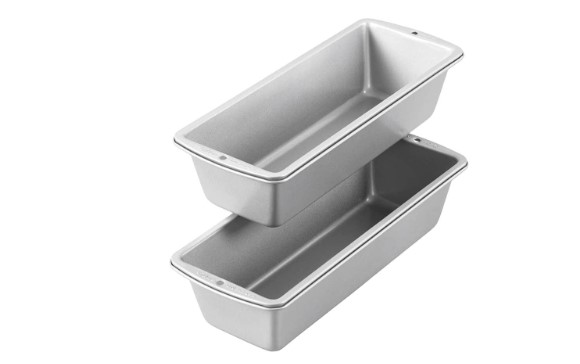
Using a loaf pan as a substitute for a Bundt pan offers a convenient option, especially if you prefer a cake with a different shape or if you want to enjoy slices of cake rather than a whole cake.
While the resulting cake won’t have the same ring-shaped appearance, it can still be moist and delicious. Here’s how to use a loaf pan as a substitute:
Description
A loaf pan, also known as a bread pan, is a rectangular baking pan with straight sides and a bottom, typically made of metal, glass, or silicone. It’s commonly used for baking quick breads, such as banana bread and zucchini bread, as well as pound cakes and meatloaf.
Advantages
- Versatility: Loaf pans are versatile and can be used for baking a variety of recipes, making them a useful tool in the kitchen.
- Even Baking: Loaf pans provide even heat distribution, resulting in consistent baking and delicious results.
- Portion Control: Loaf cakes can be sliced into individual portions, making them convenient for serving and storing.
Usage
When using a loaf pan as a substitute for a Bundt pan, follow these steps:
- Preheat your oven to the temperature specified in your Bundt cake recipe.
- Grease the bottom and sides of the loaf pan generously with butter, cooking spray, or oil to prevent sticking.
- Prepare your Bundt cake batter according to the recipe’s instructions.
- Pour the batter into the greased loaf pan, spreading it evenly with a spatula.
- Tap the loaf pan gently on the countertop to remove any air bubbles and ensure an even distribution of batter.
- Place the loaf pan in the preheated oven and bake the cake according to the recipe’s recommended baking time. Keep a close eye on it, as it may bake faster or slower than a traditional Bundt cake depending on the depth and material of the loaf pan.
- Once the cake is baked, remove it from the oven and allow it to cool in the pan for a few minutes.
- Carefully invert the loaf pan onto a wire rack to release the cake. If needed, run a knife around the edges of the cake to loosen it from the pan.
Tips
- Adjust Baking Time: Since loaf pans have a different shape and depth than Bundt pans, the cake may bake faster or slower. Keep an eye on it and perform the toothpick test to check for doneness.
- Decorating: While the cake won’t have the same decorative ring shape as a Bundt cake, you can still decorate the top with frosting, glaze, powdered sugar, or fresh fruit to enhance its appearance and flavor.
8. Cake Rings
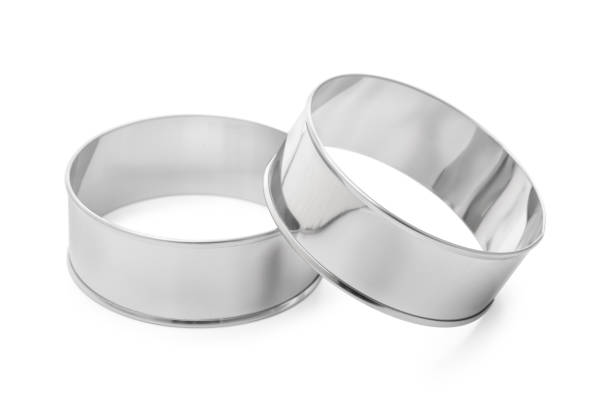
Using cake rings as a substitute for a Bundt pan provides a unique and elegant option for baking cakes. Cake rings, also known as pastry rings or cake molds, are versatile tools commonly used in professional bakeries and pastry kitchens.
While they require some additional support during baking, they offer flexibility in shaping and decorating cakes. Here’s how to use cake rings as a substitute:
Description
Cake rings are metal or stainless steel rings with straight sides and no bottom. They come in various sizes and heights, allowing for customization of cake sizes and shapes.
Cake rings are typically placed on a flat baking sheet or a sturdy pan lined with parchment paper or a silicone mat to provide support during baking.
Advantages
- Customization: Cake rings allow for creative freedom in shaping cakes, making them ideal for unique and decorative designs.
- Even Baking: When placed on a baking sheet, cake rings provide even heat distribution, resulting in consistent baking and delicious results.
- Versatility: Cake rings can be used for baking cakes, layered desserts, entremets, and even savory dishes like mousses and terrines.
Usage
When using cake rings as a substitute for a Bundt pan, follow these steps:
- Preheat your oven to the temperature specified in your Bundt cake recipe.
- Place the cake ring on a flat baking sheet or a sturdy pan lined with parchment paper or a silicone mat to provide support during baking.
- Grease the inside of the cake ring generously with butter, cooking spray, or oil to prevent sticking.
- Prepare your Bundt cake batter according to the recipe’s instructions.
- Pour the batter into the greased cake ring, filling it to the desired height. Ensure that the batter is evenly distributed and level.
- Tap the cake ring gently on the countertop to remove any air bubbles and ensure an even distribution of batter.
- Place the baking sheet with the cake ring in the preheated oven and bake the cake according to the recipe’s recommended baking time. Keep a close eye on it, as the baking time may vary depending on the size and depth of the cake ring.
- Once the cake is baked, remove it from the oven and allow it to cool in the cake ring for a few minutes.
- Carefully remove the cake ring by sliding it off the cake. If needed, run a knife around the edges of the cake to loosen it from the ring.
Tips
- Support: Ensure that the cake ring is placed on a flat and sturdy surface during baking to prevent batter leakage or uneven baking.
- Decoration: Since cake rings create cylindrical cakes, you can decorate the top and sides of the cake with frosting, glaze, powdered sugar, or fresh fruit to enhance its appearance and flavor.
Tips To Remember When Using Bundt Pan Alternatives
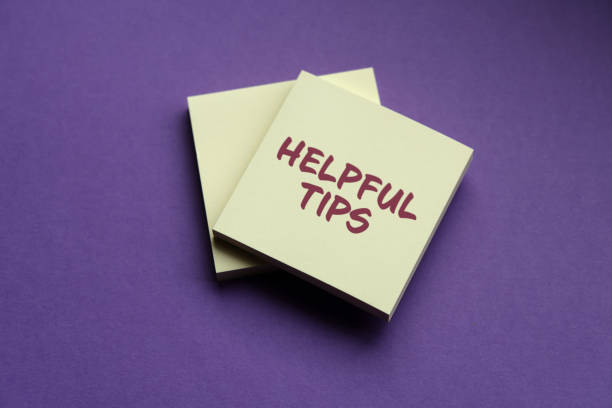
Using alternatives to a Bundt pan can be a fun and creative way to bake your favorite recipes. Here are some tips to keep in mind when using Bundt pan alternatives:
Measure the Ingredients Properly
- Accurate measurement of ingredients is crucial for successful baking. Use measuring cups and spoons specifically designed for dry and wet ingredients to ensure consistency in your recipes.
Butter Is Your Friend
- Greasing the pan properly is essential to prevent sticking. Whether you’re using a tube pan, springform pan, or muffin tin, generously coat the pan with butter or cooking spray to create a non-stick surface.
Use a Knife or Other Cutting Tools
- When using alternative pans such as springform pans or cake rings, it’s important to loosen the edges of the cake from the pan before removing it. Use a knife or offset spatula to gently run along the edges of the cake to release it from the pan.
Adjust Baking Time and Temperature
- Different pans conduct heat differently, so be prepared to adjust the baking time and temperature accordingly. Keep an eye on your cake as it bakes and use a toothpick or cake tester to check for doneness.
Don’t Be Afraid to Try Out New Things
- Baking is all about experimentation and creativity. Don’t hesitate to try out different pan alternatives and get creative with your recipes. You might discover new favorite techniques and flavors along the way!
By keeping these tips in mind, you can confidently use Bundt pan alternatives to create delicious and visually stunning cakes and desserts.
Frequently Asked Questions (FAQs) – What Can You Use Instead Of A Bundt Pan
What are some creative alternatives to using a Bundt pan?
There are plenty of options! You can use a regular cake pan, a springform pan, or even a deep pie dish.
Can I still achieve that beautiful Bundt shape without a Bundt pan?
Of course! You can try using a decorative gelatin mold or a deep, oven-safe bowl to create stunning shapes for your cakes.
I don’t have a Bundt pan, but can I still make a delicious cake?
Absolutely! You can use a muffin tin to make adorable mini Bundt cakes or even a loaf pan for a different presentation.
Are there any advantages to using alternatives to a Bundt pan?
Definitely! Using different pans allows for versatility in shapes and sizes, giving you the freedom to experiment and get creative in the kitchen.
What if I want to make a Bundt cake but don’t have the exact pan?
No worries! You can use a tube pan or even a deep skillet with a heatproof handle to achieve similar results.
I’m hosting a party and want to impress my guests with a Bundt cake. What can I use if I don’t have the pan?
You can use a Bundt cake recipe and bake it in a ring-shaped mold or even a silicone mold for an elegant dessert centerpiece.
Can I use alternative pans for intricate Bundt cake designs?
Absolutely! Silicone molds with intricate designs or even specialty cake pans can create stunning results, perfect for any occasion.
What if I want to make a Bundt cake but need to adjust the recipe for a different pan?
It’s easy! You can adjust the baking time and temperature slightly to accommodate different pans while still achieving a delicious cake.
I’m excited to try making a Bundt cake with what I have on hand. Any tips for using alternative pans?
Sure! Make sure to grease the pan well and consider using a baking spray with flour for easy release and beautiful results every time.
Are there any unconventional items I can use to substitute for a Bundt pan?
Absolutely! You can get creative with items like a clean, empty tin can (with both ends removed) or even a clean flower pot (if food-safe) for a unique twist on traditional baking. Just be sure they’re oven-safe and thoroughly cleaned before use.
Conclusion
In conclusion, exploring alternative options to a traditional Bundt pan opens up a world of creativity and adaptability in the kitchen.
Whether employing a standard cake pan, a muffin tin, or even a makeshift mold such as a cleaned-out tin can or a well-shaped oven-safe bowl, the versatility of substitutes offers both practical solutions and opportunities for inventive baking endeavors.
With a bit of ingenuity and resourcefulness, home bakers can confidently embark on their culinary journeys, knowing that they can achieve beautifully baked treats even without a dedicated Bundt pan at hand.